Early Adulthood



The Republic’s prestige quickly bounced back after a successful naval battle in the spring of 1095 and although the First Crusade departed a year later from the coasts of Italy without any knights and ships from Venice, it wasn’t long before Doge Vital I Michele (1095-1102) realized the economic gravity of the crusades. In July of 1099, 207 ships sailed from Venice to support the First Crusade. The Venetian fleet wintered on the Greek island of Rhodes where it intercepted and sank a fleet of enemy ships until it sailed for Myra in Asia Minor, where it obtained the remains of Saint Nicholas and Theodore the Martyr. It then turned towards Syria & Palestine where it managed to break the blockade that had been imposed on the troops of Godfrey of Bouillon in Jerusalem (conqueror and first ruler of the Christian Kingdom of Jerusalem) securing new rights and tax exemptions for the people and merchants of Venice.



The establishment of the Catholic Crusader States on the eastern coasts of the Mediterranean opened a wide spectrum of opportunities for the naval city state of Venice which had already the advantage of good relations with the dwindling Byzantine Empire on the east, in essence filling the gap on its behalf.
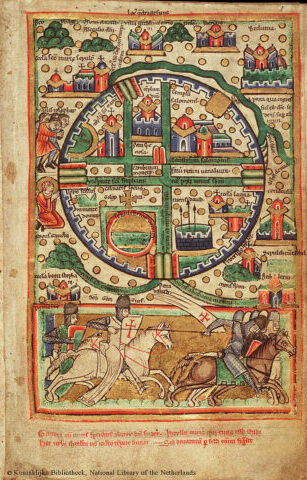


The plea for help by Baldwin de Burg, King of Jerusalem to Pope Callixtus II, after a crushing defeat by the Turks in 1119, would be forwarded to the Venetians which were more than eager to answer. The rewards were agreed in advance and on August of 1122, 120 ships with 15.000 men left the Venetian lagoon for the Palestinian coast under the leadership of the doge himself.



The naval expertise and ingenuity of Doge Domenico Michele who led the Venetians, played out in masterful way in May of 1123, when he managed to trick the Saracen fleet of about 100 ships sailing off the coast of Ascalon (modern day Ashqelon, Israel) and make them believe that what was in front of them was an inferior pilgrimage convoy. Thus secured another resounding victory for Serenissima. The Venetians then landed their ships in Acre (part of the Kingdom of Jerusalem since 1104), with the doge following the route to Jerusalem, where he celebrated Christmas and established a treaty known as “Pactum Warmundi”. Signed with Patriarch Warmund (hence the name of the treaty) of Jerusalem (Baldwin de Burg had been held captive by the Turks after a battle earlier that year), the treaty granted the Venetians several rights, privileges and lands in exchange for their help in the siege of Tyre, one of the two cities on the coast still under Muslim control (the other was Ascalon).



The city of Tyre fell in June of 1124 and the Venetians were free to head home carrying with them agreements that would make Venice the predominant power in the Eastern Mediterranean. Despite the prospects of future gains however the spoils of the expedition had not matched the aspirations of the troops and so with their confidence at an all time high, the conquerors of Tyre, exercised their predatory urge on the way back, on the Byzantine islands of Rhodes, Samos and Lesbos , and the city of Methoni in the Peloponnese. The inscription on Doge Michele’s tomb reveals the pride with which his fellow citizens perceived these misconducts. “Terror Graecorum…et laus Venetorum”(“A horror to the Greeks…in praise of the Venetians”).
The next doge fell into a turbulence of successive attacks by a series of external enemies. First the Hungarians, captured important Venetian bases on the Dalmatian coast, then Padova tried to extend its influence in territories under Venetian control and finally Ancona infringed on its south borders. It was at that perilous time that the first Consilium Sapientis (Council of Wise Men) was established by representatives of the dominant aristocracy as well as bankers and merchants in order to advise the doge in the matters of the Commune Veneciarum (City of Venice), in a new oligarchic form of the state that would increasingly restrict the rights of the doge.


Venice would not participate in the Second Crusade, following one of the first decisions of the sapientes but it would win new influence in Eastern Mediterranean, especially in the Greek islands of Chios, Cyprus, Rhodes, and Crete by assisting once again the Byzantines against the Normans and Roger II of Sicily. The tension between Venice and Constantinople started to build up mostly on Domenico Morosini‘s term (1148-1156). The Venetian fleet systematically plundered the Greek islands while its merchants were expelled from the Byzantine capital by John II Komnenos. In the same time, relations with the Vatican took an opposite turn, creating positive effects on domestic matters and on the trade with the rest of the Catholic countries, which had up to that point considered Venice to be a schismatic (Byzantine) realm.



Coming in good terms with the rest of the Catholic world didn’t mean that the city was keen on ceding an inch of its autonomy to anyone besides its local rulers. In 1164 Venice established the Veronese League with Verona, Padova, Vicenza, and Treviso against the efforts of Emperor Frederick I Barbarossa for the direct Imperial control over Italy. Three years later more cities joined in the so-called Lombard League that had the same aim.

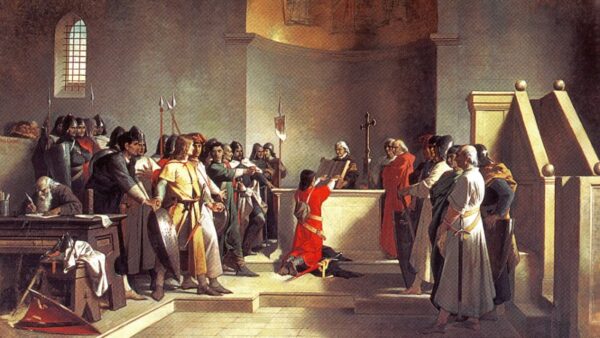
In 1171 the Genoese settlement in Constantinople is attacked and nearly destroyed. Despite the Genoese affirmations that Venetians had nothing to do with the attack, Manuel I Komnenos (r. 1143–1180) used the incident as a pretext to order the imprisonment of all Venetian citizens in the Byzantine territory and their property and ships to be confiscated.



The long established alliance between Venice and Constantinople was officially over. Preparations for a full frontal war started immediately and in September 1171, Doge Vitale Michiel II led an armada of 120 ships out of the Lagoon to attack Byzantium. Mostly preoccupied with the threats coming from the east the Byzantine Emperor chose a stalling tactic with the ambassadors of the two sides agreeing on a truce and the Venetian armada waiting at the island of Chios during the negotiations that dragged on through the winter.
An outbreak of the plague that spread like fire among the stacked crews would force the armada to retreat to Venice empty-handed and the Doge to face the General Assembly at the Ducal Palace in May 1172. He was accused of falling into the Byzantine trap and nearly decimating the Venetian fleet without even giving a fight. He was also accused of bringing the plague back into the city. With the General Assembly against him and an angry mob outside the palace, the doge attempted to flee to the Convent of S. Zaccaria but was stabbed to death outside the convent by one of the mob. He was the first doge to be murdered at home in more than 200 years.



Later that year, the new doge Sebastiano Ziani (1172–1178) would drastically change the entire layout of St.Mark’s Square and commence the great reconstruction of the Ducal Palace based on the pre-existing fortresses on the site, with one facade to the Piazzetta of San Marco and the other overlooking the St. Mark’s Basin.
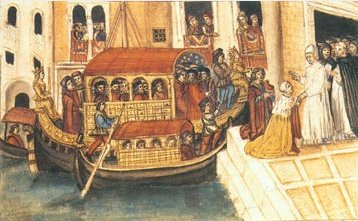


On 29 May 1176 the Imperial army of Frederick I Barbarossa suffered a major defeat by the Lombard League in the Battle of Legnano. On July 24th, the emperor himself would close the chapter of his Italian aspirations by signing the Treaty of Venice in the Lido, at the mouth of the Venetian Lagoon.


In 1181 the first pontoon bridge across the Grand Canal was set up in order to provide direct access to the Rialto district that had grown into the most important market area of the city. The name of the bridge would be Ponte della Moneta probably because of a mint that stood near its eastern entrance. It would be the first version of the famous Rialto Bridge which evolved into a wooden structure of two inclined ramps that met at a movable central section that could be raised to allow the passage of tall ships in 1255.


In 1192, Enrico Dandolo, son of a close advisor to Doge Vitale II Michiel who had been murdered a few years earlier and member of one of the most prestigious Venetian families (it had already produced a patriarch), would reach the highest office of the Republic after serving for many years as an ambassador in Constantinople. When Dandolo became the forty-second Doge of Venice, he was already aged and blind (he was probably born around 1107), he showed however according to contemporary testimonies, tremendous mental strength. He had also accumulated an almost life-long hatred for the Byzantines after narrowly escaping the wrath of his fellow citizens in the disastrous expedition against Byzantium in 1172 and after seeing first hand the results of the so-called Massacre of the Latins that decimated a population of nearly 60.000 in Constantinople by the Byzantines in 1182. Dandolo‘s aptitude for the job became obvious very soon with the introduction of the silver grosso in the Venetian currency system in 1194. Until then the Venetian merchants had been using the Byzantine coinage in their foreign trade and the silver pennies called denari that were based on the coinage of Verona for its domestic transactions. The grosso was kept at 98.5% pure silver (the denari contained less than 25% of fine silver) worth 26 denarii. It would soon become the dominant currency for trade in the Mediterranean.



Saladin’s conquest of the greatest part of the Kingdom of Jerusalem in 1187 had set in motion a new round of crusading fervor. The Third crusade of 1189 had failed to re-conquer Jerusalem and in 1198, immediately after his ascension to the throne, Pope Innocent III made clear that a new crusade would be the prime goal of his pontificate. Ιn March 1201 Venice agreed on the ambitious plan of the transportation of a massive army of 33.500 crusaders. The endeavor required a full year for the construction of numerous new ships, the training of a great number of new sailors that would man the ships in addition to the de facto curtailing of the city’s naval commercial activities.



Although the Venetians kept their share of the bargain the assembled in Venice crusaders in May 1202 were about three times less than what was expected. This could only translate into an economic disaster for the city which had invested too much to the expedition. The payment of the crusaders hardly covered half of the agreed price and Dandolo had to come up with a solution. It didn’t take long for the ingenious Venetians to figure out a way out of the mess. The cities and the ports on the coast of the Adriatic had been under the immediate Venetian control since the beginning of the 1000’s and the end of the era of the Narentine pirates. The city of Zadar (Zara) in Dalmatia had rebelled and allied itself with the King of Croatia & Hungary since 1181. The indebted crusaders would help Venice re-establish its dominion in the Adriatic, subdue Zadar and pay the rest of the owed silver to Venice out of the spoils of the war. Dandolo gave a fervent speech in San Marco committing himself in crusading, in essence taking the helms of the expedition and in October 1202 the fleet sailed from the lagoon.

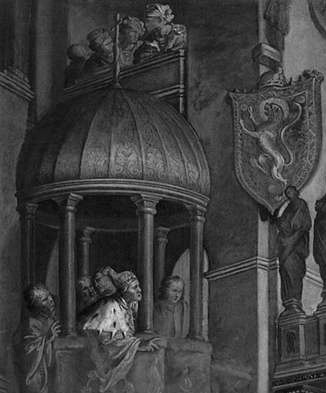

Zadar fell after a brief siege in November 1202. The fortifications of the city were demolished and the spoils were divided according to the agreement. Still the numbers didn’t add up for the Venetians. Things would take an unexpected turn. Alexius IV Angelus, son of the deposed by his brother, Byzantine Emperor Isaac II Angelos had fled to the court of the Hochenstauf King of Germany, Philip of Swabia (South-western Germany) and had spent some time in the German court trying to win the German King’s support for the deposition of his uncle. In a twist of fate , at that court, at that time, he would meet with the Italian count Boniface of Montferrat who had initially been chosen as the leader of the Fourth Crusade but had disagreed with the Venetian plans and had not participated in the expedition against Zadar. Instead he had decided to pay a visit to his cousin, the German King.


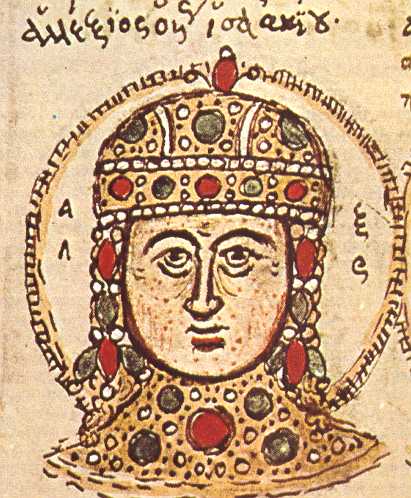

It is uncertain whether the meeting of the two was pre-organised by the German King or whether the Italian Count traveled to the German Court to meet the Byzantine prince (whose sister Irene Angelina was the wife of the German King). What’s certain is that Boniface carried with him a very attractive proposal for the crusaders. They would help the Byzantine prince get the throne of Constantinople and he would give them γή και ύδωρ (everything in his power). The Byzantine Prince would cover the crusaders’ debt, he would pay them a colossal amount of silver, he would provide 10.000 Byzantine troops for the causes of the crusade, 500 knights in the service of the Crusader State in the Holy Land, he would transfer troops with the Byzantine navy, he would even place the Eastern Orthodox Church under Papal authority. It was an offer made in heaven for Enrico Dandolo and the Venetians.
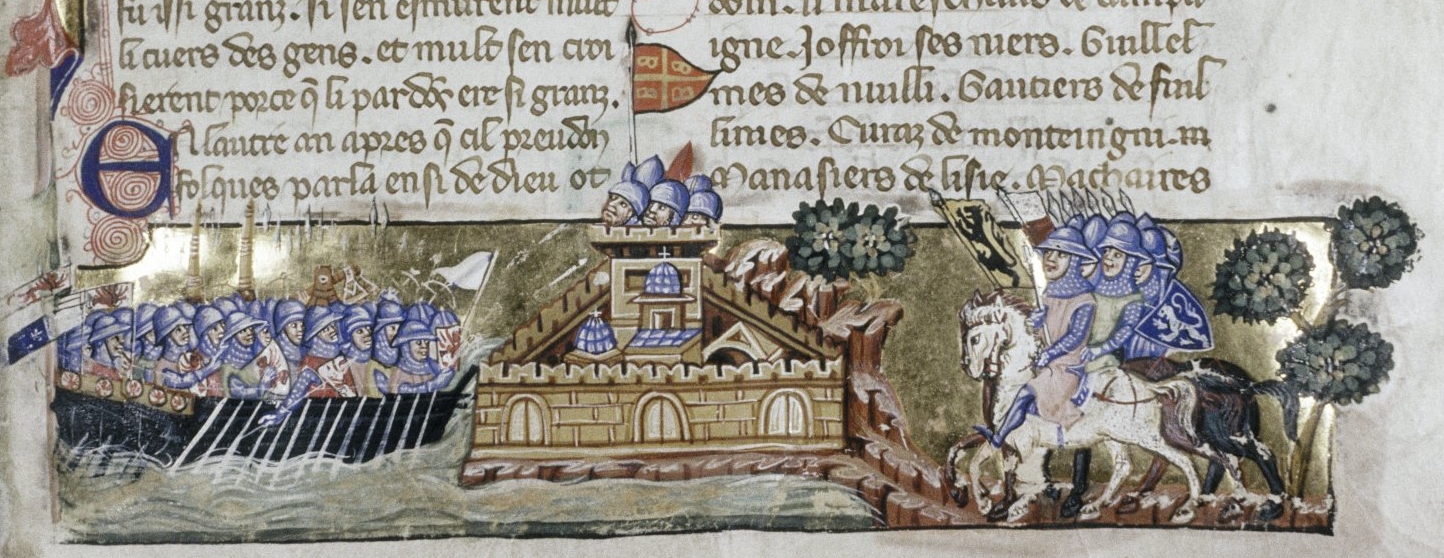


The overall unprepared and unable to even conceive an impeding invasion by a Christian army, capital of the Byzantine Empire, had fallen to the crusaders by April 13th 1204. In the new world that was dawning Venice would play the role of a super-power. The Eastern Roman Empire was no more and Venice, the city that had played the most important role in the fall of Constantinople after almost 1000 years of existence, would try to fill in the gap. Ancient Greco-Roman and medieval Byzantine works of art were either sent to Venice like the famous Bronze horses of the Hippodrome , or were disassembled for their material value, a tactic less popular among the Venetian soldiers who had a bigger appreciation for the art than the rest of the crusaders.

![]()


